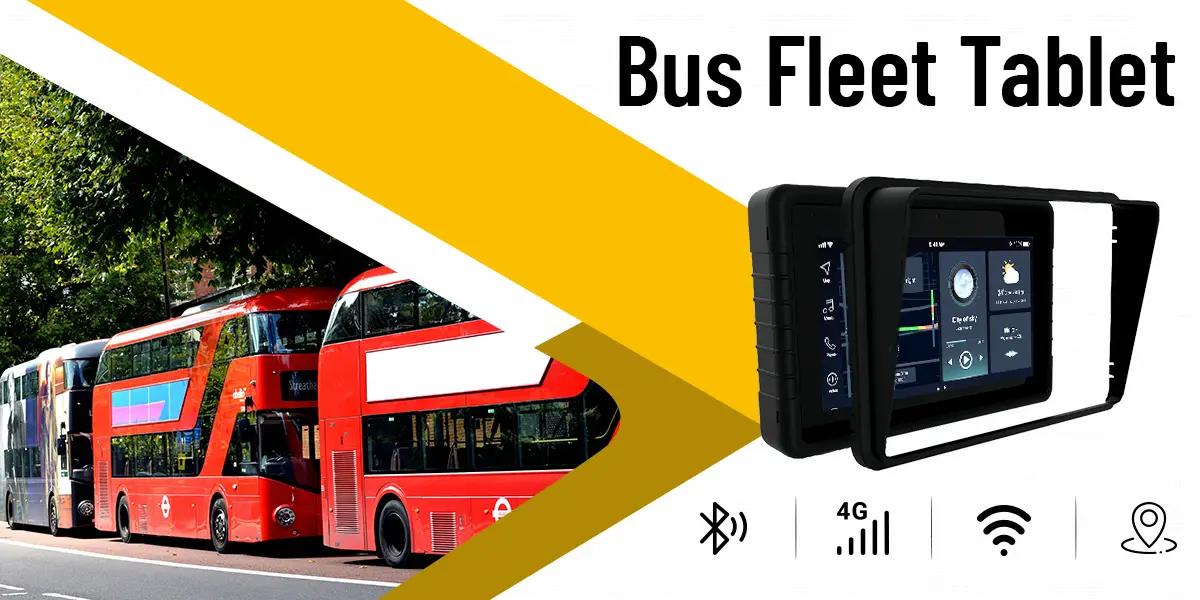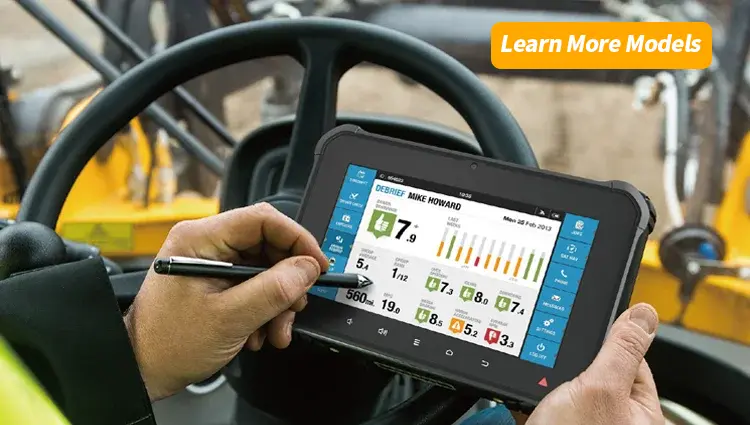Enhancing Bus Fleet Management with Rugged Tablets
Managing a bus fleet is no small feat. Whether you’re overseeing public transportation, private buses, or school fleets, the challenges can seem endless. From ensuring vehicle safety and managing routes to keeping track of driver behavior and reducing fuel costs, there are many moving parts. Enter rugged tablets—durable, reliable devices that are transforming the way fleet managers operate. These devices are purpose-built for tough environments and provide real-time solutions to long-standing challenges in bus fleet management. But how exactly do they work? And why are more fleet managers turning to them?

The Rise of Rugged Tablets in Fleet Management
Rugged tablets have been gaining traction in many industries, but they are especially useful in bus fleet management. Designed to withstand harsh conditions, these tablets offer a robust platform for managing and monitoring fleets in real time. Unlike regular consumer-grade tablets, they are built to endure the rough and tumble environment of bus garages and on-the-road conditions.
What Exactly Are Rugged Tablets?
Before diving into the details of how rugged tablets enhance fleet management, let’s first clarify what rugged tablets are. Essentially, rugged tablets are built to survive extreme conditions such as drops, extreme temperatures, and exposure to dust and moisture. These devices are specially made for industries like transportation, where durability is key.
Why Rugged Tablets Are a Game Changer for Bus Fleet Management
1. Real-Time GPS Tracking for Efficient Route Management
One of the biggest advantages of rugged tablets is the ability to offer real-time GPS tracking. For fleet managers, keeping track of where each bus is at any given time can help streamline operations. For example, you can quickly see which vehicles are delayed and reroute buses to minimize impact on schedules. This is especially useful for public transportation systems that need to stick to strict schedules.
2. Enhanced Driver Communication
With rugged tablets, fleet managers can communicate with drivers easily. Two-way communication systems allow for instant messaging, which can help drivers get updates on new routes, potential hazards, or changes in plans. This real-time communication reduces the risk of misunderstandings and can improve overall fleet safety.
3. Improved Maintenance Management
Managing the maintenance of a large fleet is tough, but rugged tablets simplify the process. Using a tablet, drivers and technicians can instantly log maintenance issues, and managers can see when and where repairs are needed. This can help reduce downtime and extend the lifespan of buses by ensuring timely repairs.
4. Monitoring Driver Behavior
Driver behavior is one of the most important factors in bus fleet management. Rugged tablets allow managers to monitor driver habits such as speeding, harsh braking, and idling. By tracking these behaviors in real-time, managers can offer feedback and training to improve safety and fuel efficiency.
The Impact of Rugged Tablets on Fleet Costs
1. Fuel Efficiency
Fuel costs are one of the largest expenses in bus fleet operations. By using rugged tablets to monitor driver behavior and improve route efficiency, fleet managers can significantly reduce fuel consumption. Features like real-time traffic updates and GPS rerouting also contribute to more fuel-efficient routes.
2. Reduced Downtime
Every minute a bus is out of commission costs money. With rugged tablets, maintenance can be better managed, leading to fewer breakdowns and less downtime. Real-time data allows fleet managers to identify potential problems before they become serious issues.
3. Lower Operational Costs
Using rugged tablets for paperless operations helps reduce paperwork, streamline workflows, and cut down on administrative costs. This digitalization of processes saves time and money.
Key Features to Look for in a Rugged Tablet for Fleet Management
When selecting a rugged tablet for your bus fleet, it’s essential to choose one with the right features for your specific needs. Here’s what to look for:
- Durability: Ensure the tablet is MIL-STD-810G certified, meaning it’s built to withstand harsh conditions like drops, extreme temperatures, and vibrations.
- Battery Life: Long battery life is crucial, especially for long routes where charging opportunities may be limited.
- Screen Readability: The tablet should have a sunlight-readable display, ensuring drivers can easily read the screen in all lighting conditions.
- Connectivity: Look for 4G LTE and Wi-Fi options to ensure continuous communication and real-time updates.
- GPS Accuracy: High-quality GPS systems are essential for route planning and monitoring.
- Software Compatibility: Make sure the rugged tablet is compatible with the fleet management software you use.
How to Integrate Rugged Tablets into Your Fleet Management System
1. Choosing the Right Fleet Management Software
Before integrating rugged tablets, ensure your fleet management software is compatible. Popular software options like Samsara and Geotab offer seamless integration with rugged tablets, providing you with the data you need to manage your fleet efficiently.
2. Training Your Team
Introducing new technology can be daunting for drivers and technicians. Ensure your team is fully trained on how to use the rugged tablets effectively. Hold workshops and provide easy-to-follow guides that explain everything from logging maintenance issues to checking routes.
Conclusion
Incorporating rugged tablets into bus fleet management can lead to significant improvements in efficiency, communication, and overall fleet performance. By providing real-time data, enhancing communication between drivers and fleet managers, and reducing operational costs, rugged tablets are a game changer. Whether you manage a public transit system, a school bus fleet, or a private company’s fleet, rugged tablets are worth considering to optimize operations.







